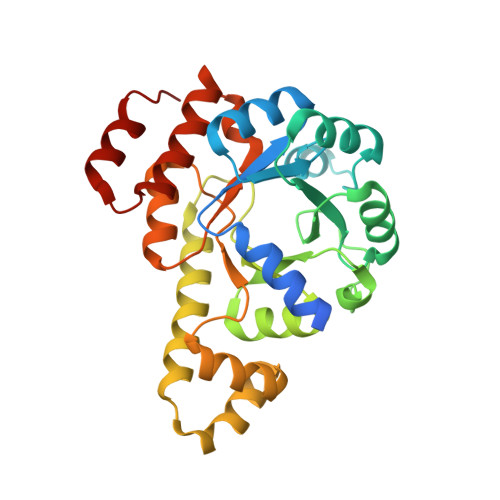Droplet microfluidics for time-resolved serial crystallography.
Stubbs, J., Hornsey, T., Hanrahan, N., Esteban, L.B., Bolton, R., Maly, M., Basu, S., Orlans, J., de Sanctis, D., Shim, J.U., Shaw Stewart, P.D., Orville, A.M., Tews, I., West, J.(2024) IUCrJ 11: 237-248
- PubMed: 38446456
- DOI: https://doi.org/10.1107/S2052252524001799
- Primary Citation of Related Structures:
8S2U, 8S2V, 8S2W, 8S2X - PubMed Abstract:
Serial crystallography requires large numbers of microcrystals and robust strategies to rapidly apply substrates to initiate reactions in time-resolved studies. Here, we report the use of droplet miniaturization for the controlled production of uniform crystals, providing an avenue for controlled substrate addition and synchronous reaction initiation. The approach was evaluated using two enzymatic systems, yielding 3??m crystals of lysozyme and 2??m crystals of Pdx1, an Arabidopsis enzyme involved in vitamin B6 biosynthesis. A seeding strategy was used to overcome the improbability of Pdx1 nucleation occurring with diminishing droplet volumes. Convection within droplets was exploited for rapid crystal mixing with ligands. Mixing times of <2?ms were achieved. Droplet microfluidics for crystal size engineering and rapid micromixing can be utilized to advance time-resolved serial crystallography.
Organizational Affiliation:
Diamond Light Source, Harwell Science and Innovation Campus, Didcot, Oxfordshire OX11 0DE, United Kingdom.
















